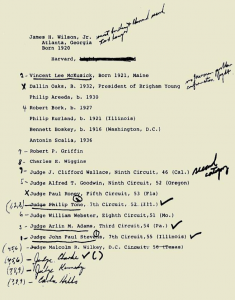Connecticut Abolishes the Death Penalty
The campaign to end the death penalty received a boost last week when Connecticut decided to abandon the use of capital punishment. Connecticut is the fifth state in the last eight years and the seventeenth state overall to do away with capital punishment.
Repeal proposals are being debated in Kansas and Kentucky, and anti-capital punishment groups have also succeeded in getting the issue directly to the voters of California. An initiative to end capital punishment will be on the California ballot this coming November.
Of course it will take some time before capital punishment is ended in Texas and in assorted states in the Deep South. But one can be more optimistic than ever before that the United States will eventually end capital punishment. Its continued use is an embarrassment for the nation in the world community.
How irrational, primitive, and bloodthirsty champions of capital punishment seem to this observer. There is no credible evidence that the possibility of capital punishment has a deterrent effect. Eye-for-an-eye thinking seems a remnant of Biblical times, if not earlier. And a genuine and abiding respect for humanity precludes killing even the worst of the wrongdoers among us.


